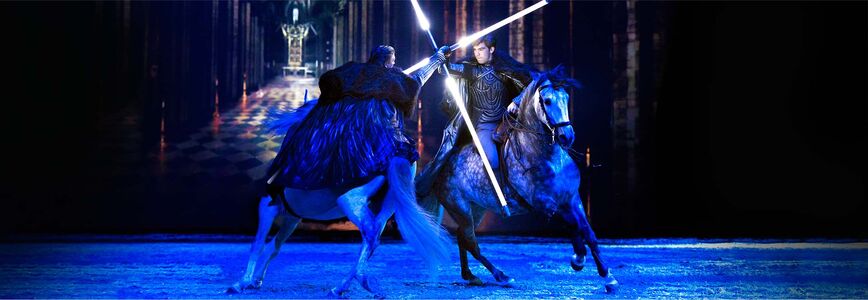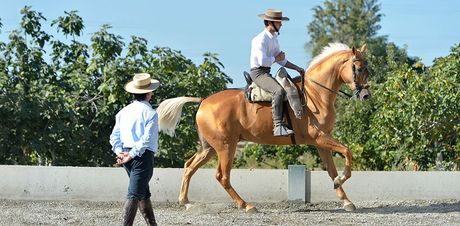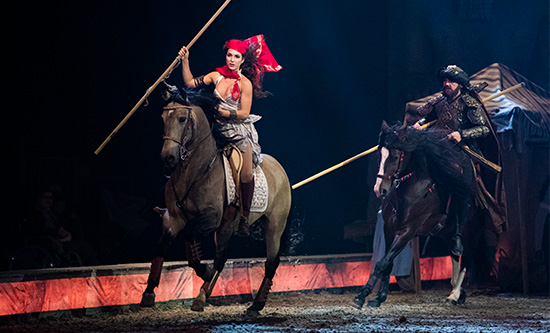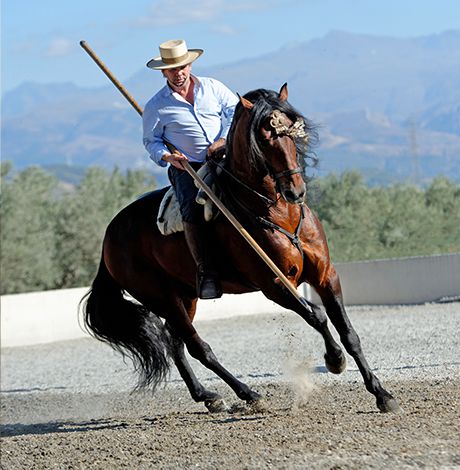
The traditional riding style of the shepherds comes from Spain and is practised with the typical garrocha pole.

Especially riding with one hand demands a lot of skill from the rider.
The traditional Spanish riding style Doma Vaquera is characterised by liveliness and precision in an inseparable unity of rider and horse. The spirited Doma Vaquera, ridden with an approx. 3 metre long wooden pole, the "Garrocha", is one of the most beautiful and fascinating disciplines from Southern Europe. Especially riding with one hand demands a lot of skill from the rider.

Originally, the riding style, which requires a lot of agility, speed and endurance, was used by the cattle herders, called vaqueros. With the help of the "garrocha", they drove their herds together on horseback and made sure that runaway cattle could be recaptured or separated from the herd. It originated in Andalusia in southern Spain in the 17th century and has been an integral part of the coexistence between humans and horses ever since. The Iberian way of riding is also the beginning of everything. Also of the popular Western riding. The reason for this is that Spanish shepherds brought the Doma Vaquera with them to America.

Agility and speed characterise the riding style of the Doma Vaquera.
With powerful dynamics and lightness, the Doma Vaquera embodies an ideal middle ground between Western riding as a traditional working riding style and classical dressage riding and thus demands an incredibly fine interplay from horse and rider. The individual lessons and the constant change between high collection and dynamic speed are immensely demanding on the horse. Traversals, pirouettes and flying canter changes are an integral part of the repertoire of a trained Doma Vaquera horse. A special challenge for the rider is to ride one-handed with the left hand and with the heavy "garrocha" in the right hand. This makes it necessary to steer the animal almost exclusively by means of weight and thigh aids - a demanding task, considering the rapid pace at which horse and rider move. Therefore, both walk and canter play an equally important role in Doma Vaquera. The walk is important to protect the horse sufficiently, while the gallop was always used, for example, when the cattle moved away from the herd and had to be driven back to the other animals. This is one of the things that makes work riding so exciting.